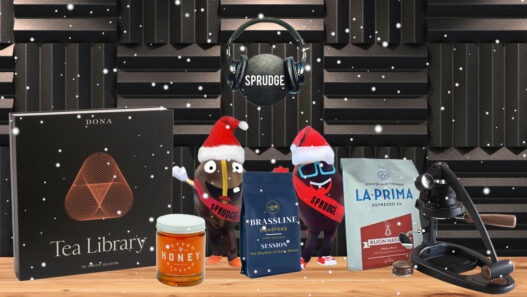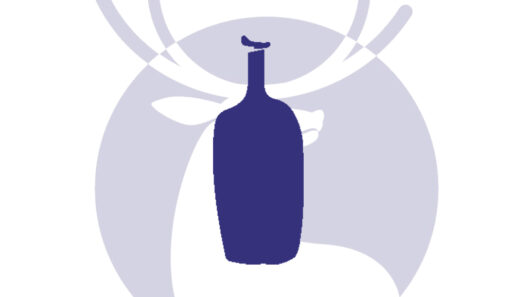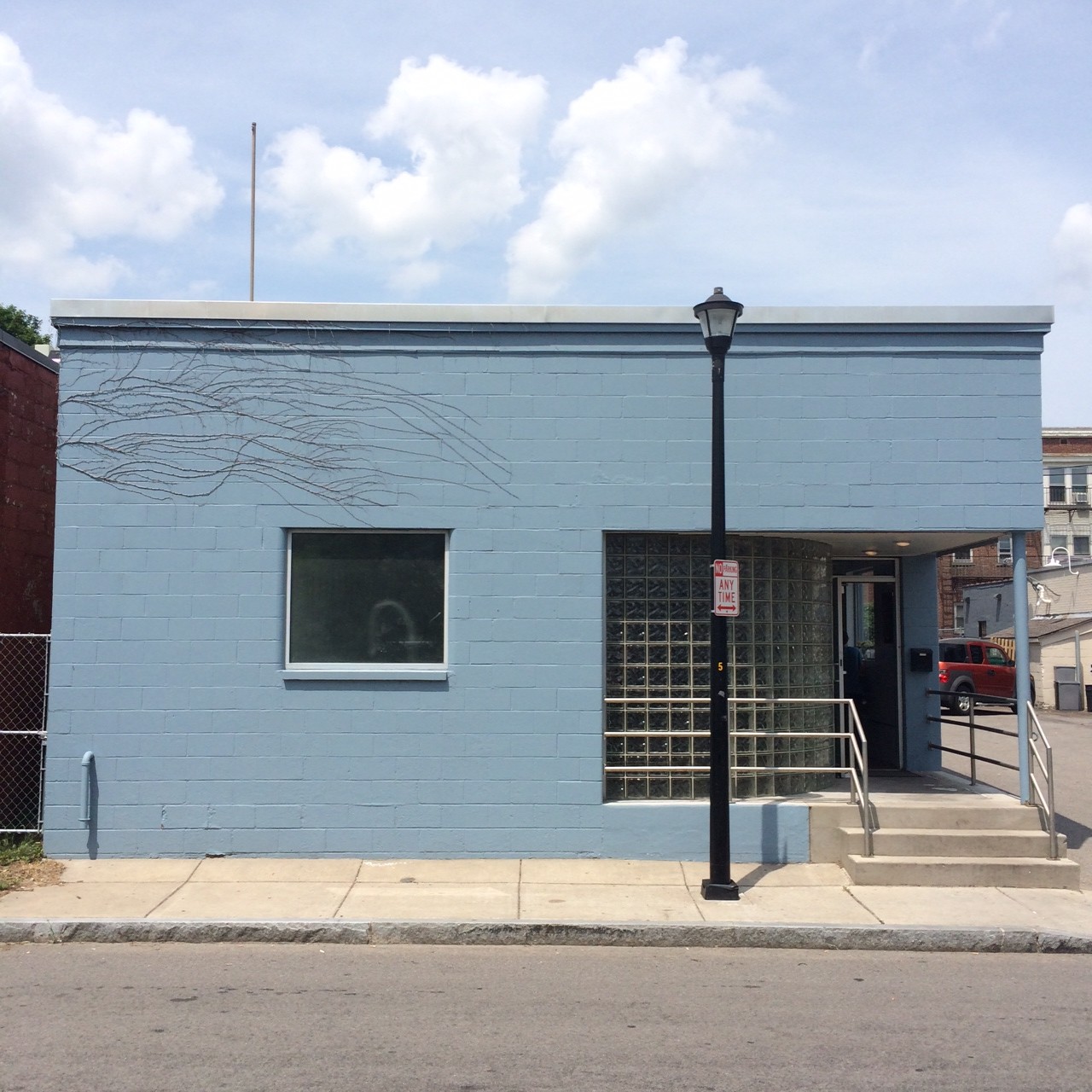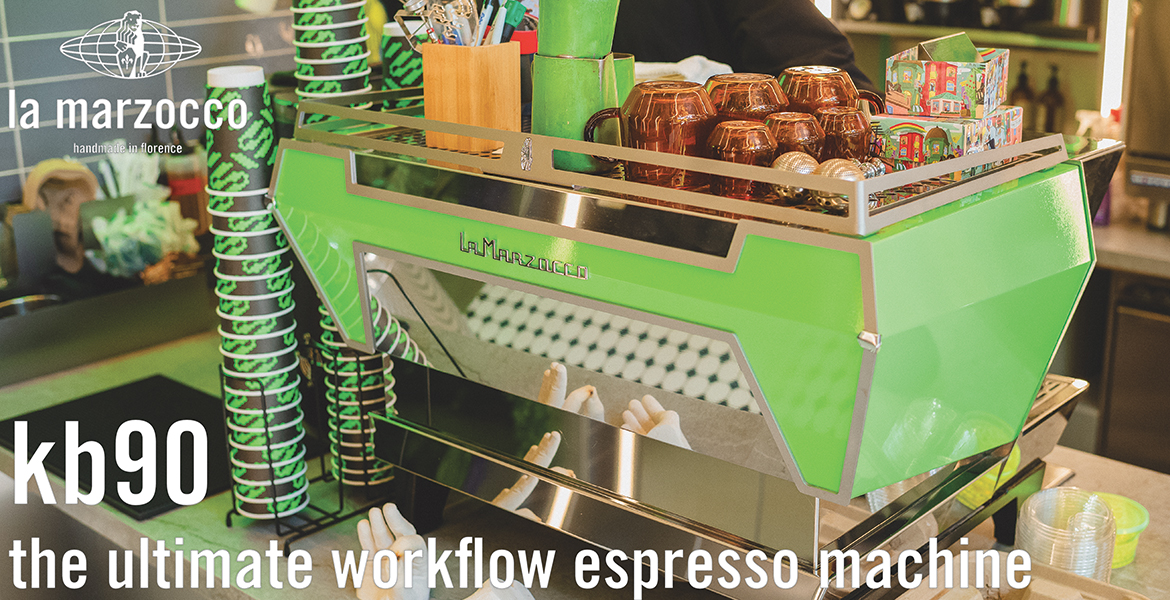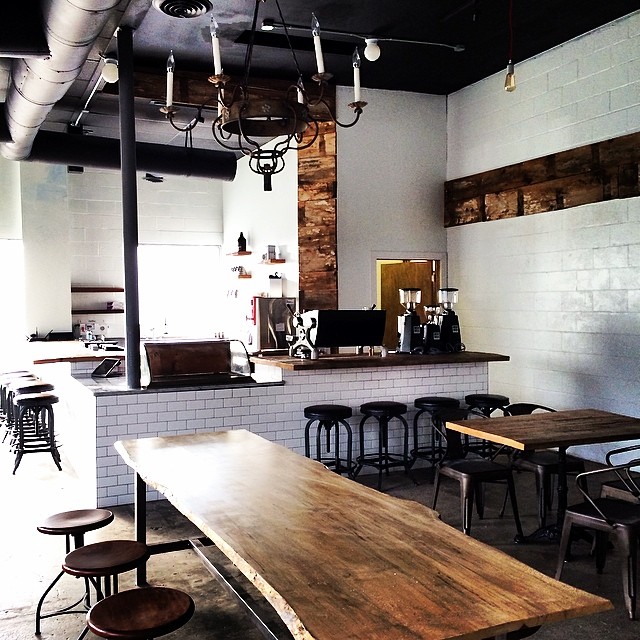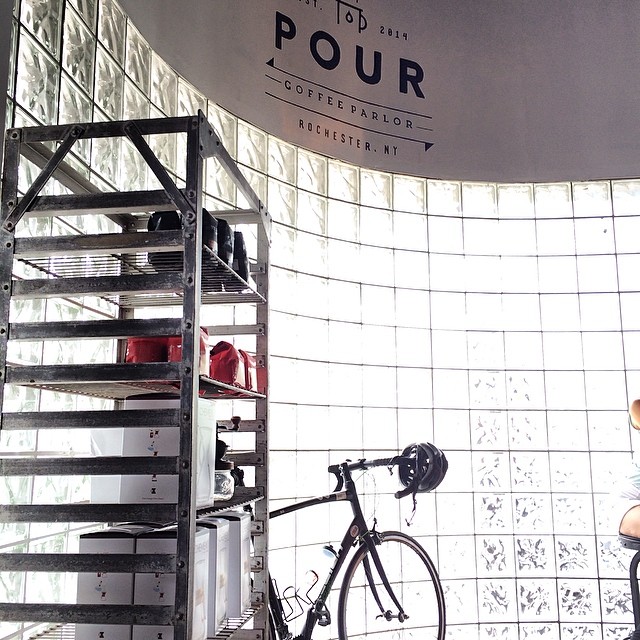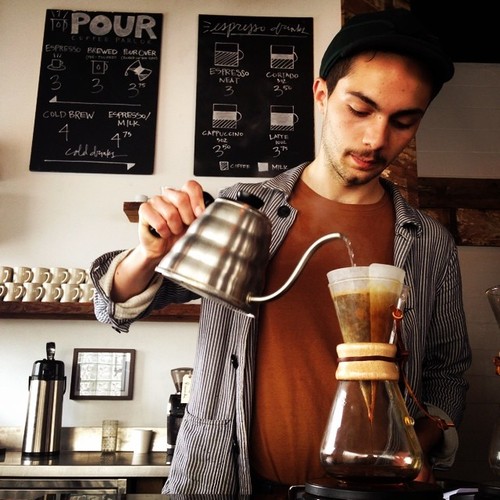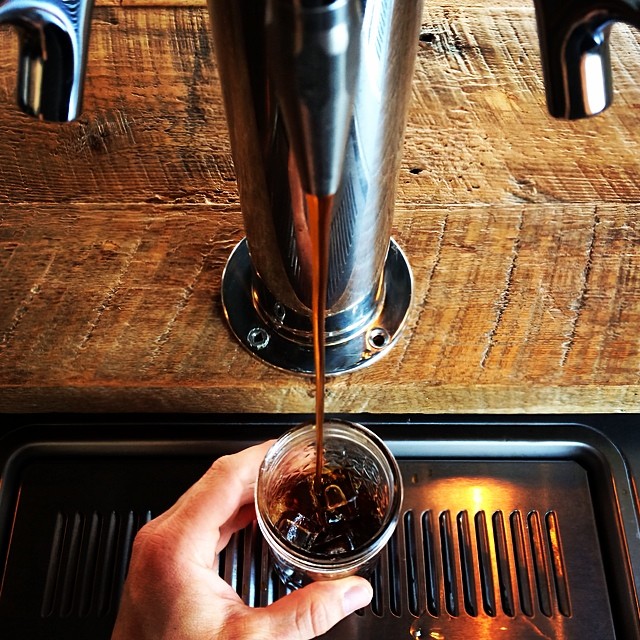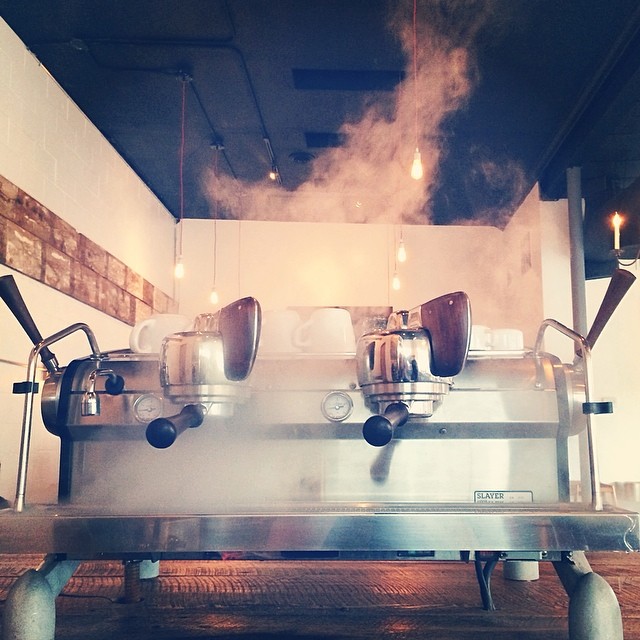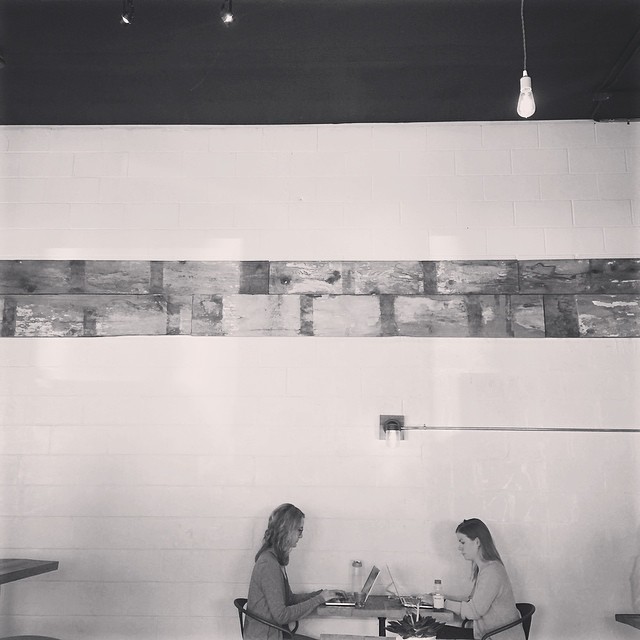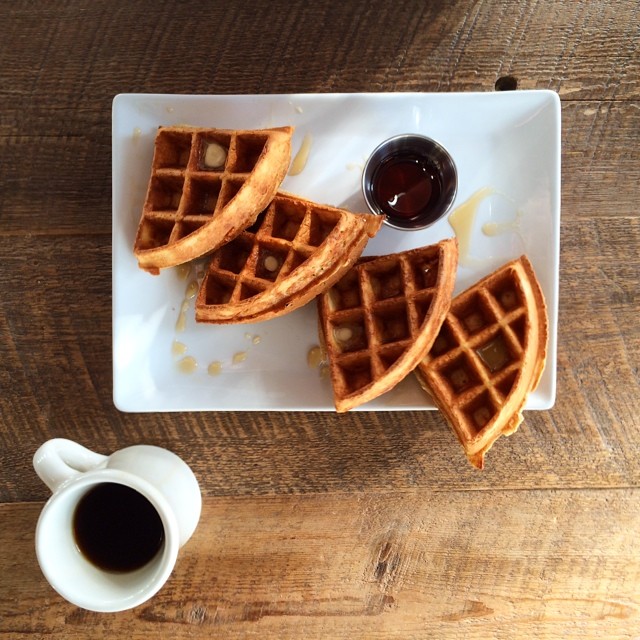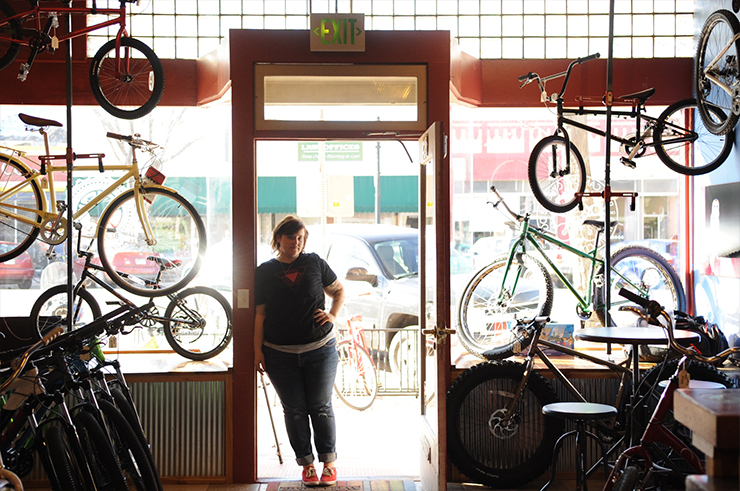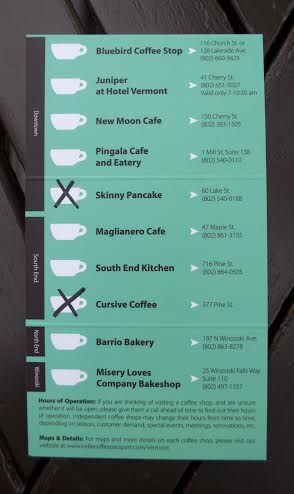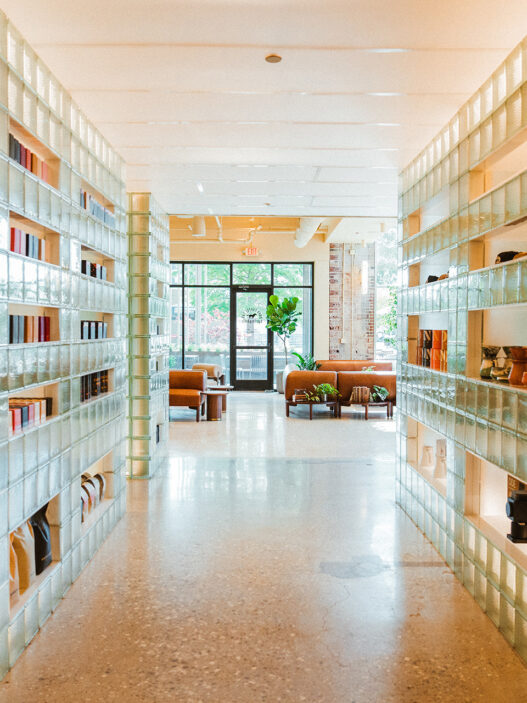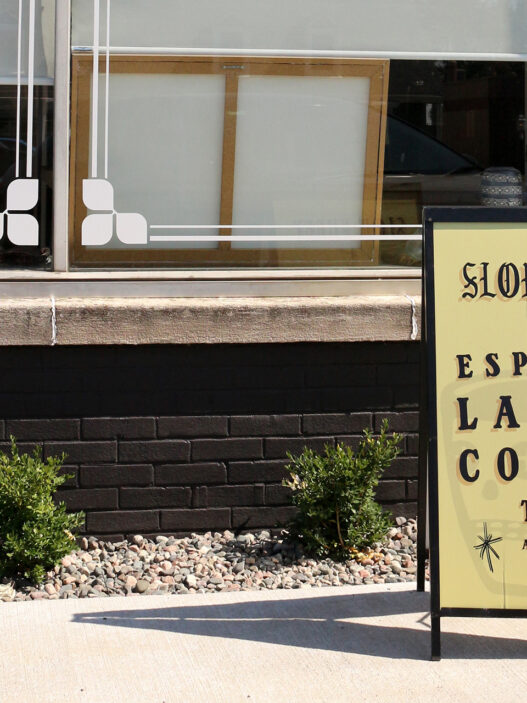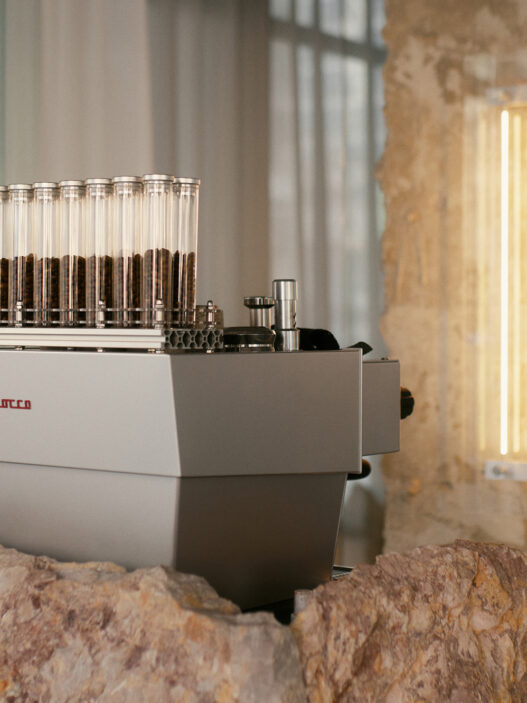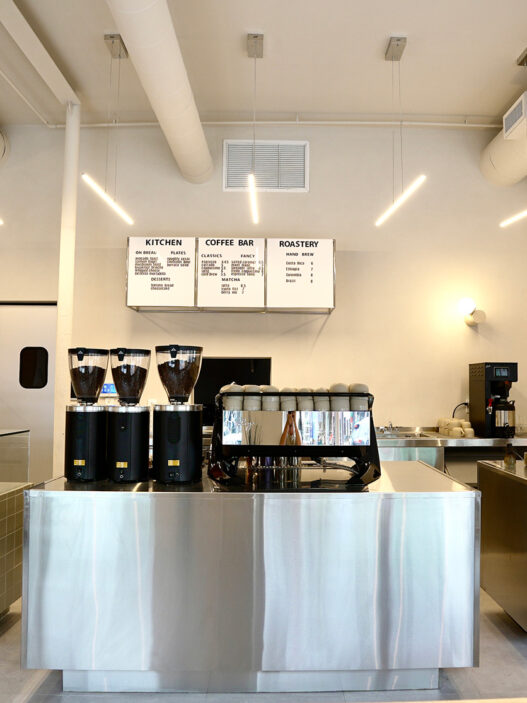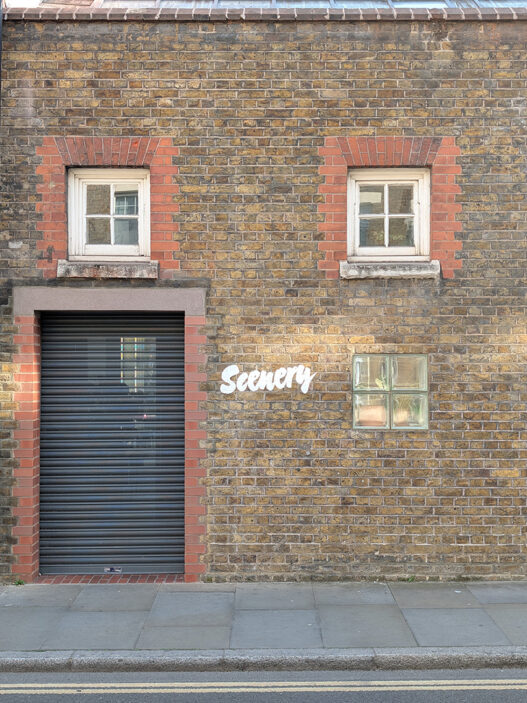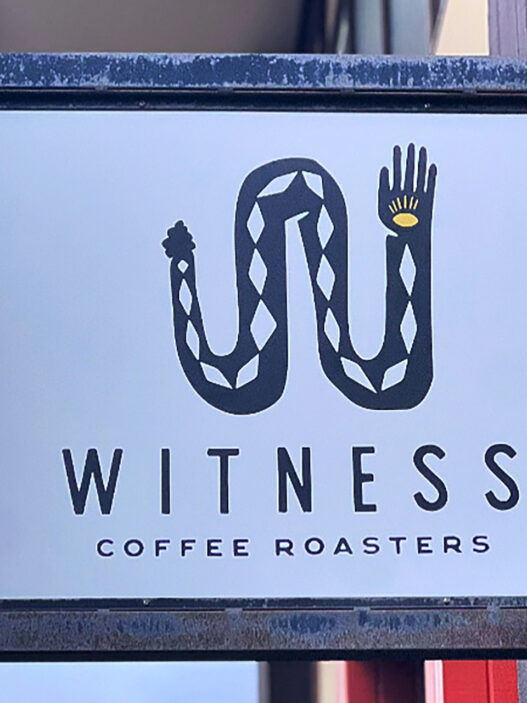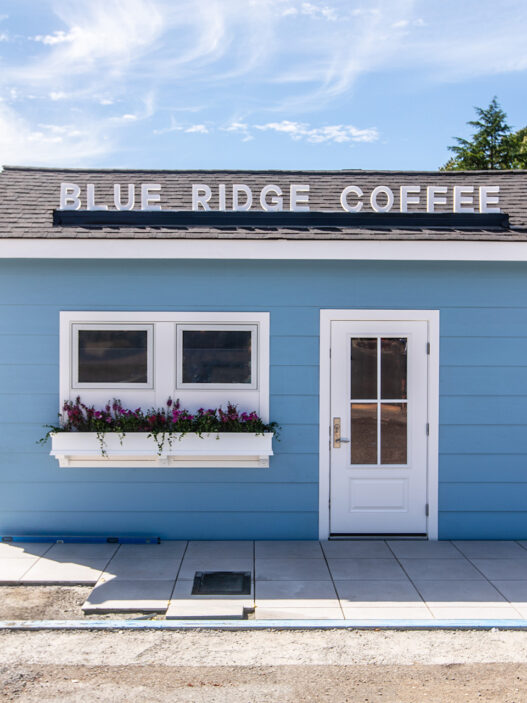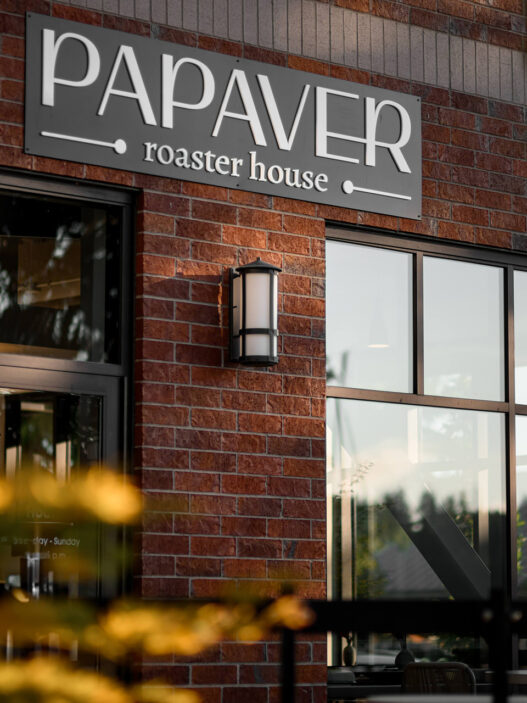Earlier today we featured the smallest town in Build-Outs history on Sprudge: Cañon City, Colorado, home to The Bean Pedaler and a census population of only around 16,000. No one would ever mistake it for our next featured city, the humble Great Lakes metropolis of Rochester, New York, where we find Ryan Baker and Pour Coffee Parlor.
Pour is a small multi-roaster serving Verve Coffee and Intelligentsia Coffee Roasters. The store opened earlier in 2014; these pics are fair bit more “complete” than some of the other build-outs we’ve featured in 2014, but we couldn’t resist showing you the shop’s stunning art deco interior, distinctive mid-century front entry, and even a cheesecake pic or two of their waffle program and steamy Slayer Espresso 2-group.
Of any Build-Out in our 2014 Build-Outs Of Summer series, this one might be the prettiest. Welcome to Rochester.
As told to Sprudge by Ryan Baker.
Can you tell us a bit about your new space?
Located in Rochester NY, Pour Coffee Parlor is situated in the walkable “Park Ave neighborhood”. The building itself was built in 1952 as a garage and a machine shop and has a retro art deco design. We were originally drawn to the building because of the curved glass block wall, high ceilings and the the open layout.
What’s your approach to coffee?
Our approach to coffee goes hand in hand with why we chose our location. We are surrounded by high volume walk-up and bike traffic from restaurants and retail shops, that have little to no exposure to the specialty coffee world. We opened Pour to do what we love and to bring great coffee to the everyday consumer. We pour each cup by hand and choose the brew method depending on the coffees we serve.
We serve 6 local craft beers, waffles, breakfast sandwiches and the best milk and cheese from First Light Dairy Farm‘s Jersey cows.
Any machines, coffees, special equipment?
Probat L12 roaster, 2 group Slayer espresso machine, nitro cold brew tap system, Gold Medal waffle maker.
Are you working with craftspeople, architects, and/or creatives that you’d like to mention?
The owners did almost all of the design work and construction themselves. Whenever possible they partner with local bakeries, artists, and craftsmen (such as a local lumber mill for all the reclaimed barn wood tables and countertops.)




